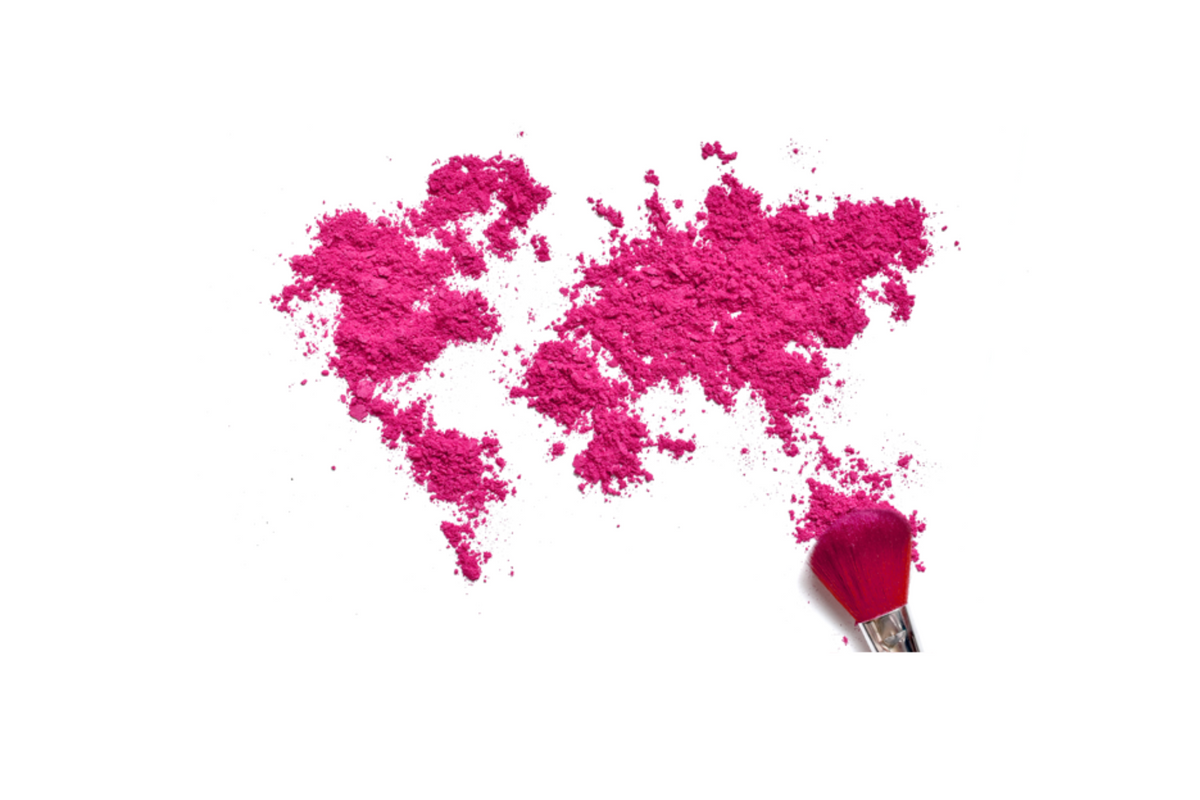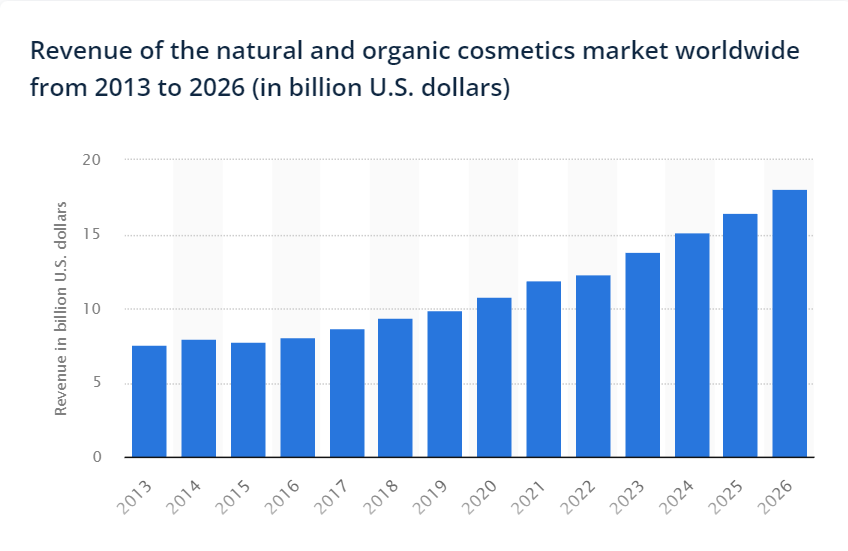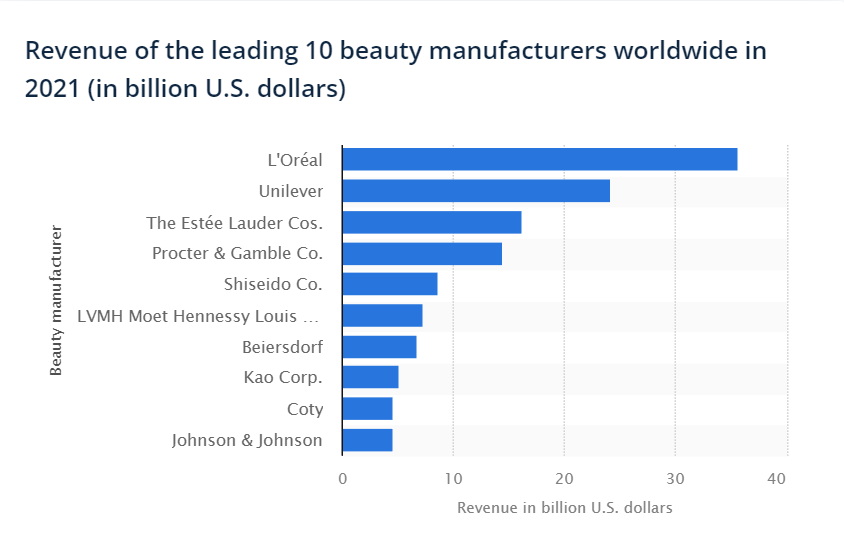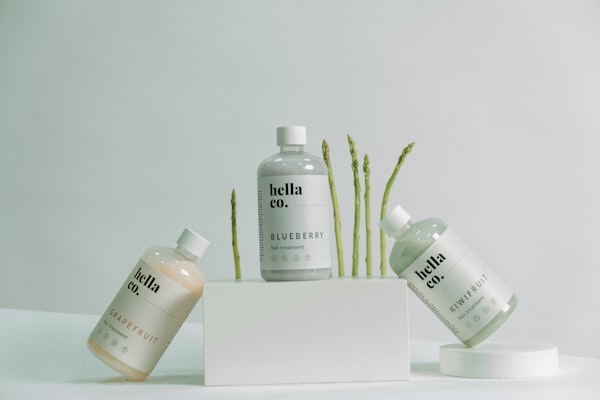How Competitive is the Beauty and Cosmetics Industry

The beauty industry is one of the most competitive industries in the world. Every year, new brands and products enter the market, and it can be tough to stand out from the crowd.
However, competition is not necessarily a bad thing. It can push companies to be innovative and create better products. It can also lead to lower prices for consumers.
So if you're thinking of entering the beauty industry, don't be discouraged by the competition. It can be tough, but it can also be very rewarding.
Despite all the competition, there's still room for new players in the industry. If you have a great product or a unique perspective, you can still make a name for yourself in the beauty industry.
And with the rise of social media, it's now easier than ever to grow a Beauty company from scratch.
Related: How to start an online cosmetics business
What makes the beauty industry so competitive?
This industry is like a never-ending game of cat and mouse, with brands constantly trying to outdo each other with the latest trends and innovations. But what is it that drives this fierce competition? It's a combination of factors - from the pressure to stay relevant in a fast-paced industry to the need to constantly attract new customers.
It's a world where the smallest advantage can make all the difference, and where even the biggest players are never truly safe. In short, the beauty industry is a battleground where only the most skilled and savvy brands can emerge victorious.
But it's not just about being new and innovative. It's also about having a loyal customer base. This is why celebrities like Kylie Jenner and Rihanna were able to build billion-dollar brands seemingly overnight.
Market Overview
The beauty and cosmetics industry is a massive and growing market, with an estimated global value of $571 billion in 2023, according to Statista. In the United States alone, the industry is projected to be worth $90 billion by 2024. That's a lot of money, which attracts a lot of competition.
While the US is the fastest-growing market for beauty and cosmetic products, Noth Asia is the largest with a market share of 35%.
With so many new products launching every day, it can be difficult to stay ahead of the curve and offer customers what they want.
One major trend that has emerged in recent years is the demand for natural and organic products. Consumers are increasingly concerned about the ingredients in their skincare and makeup products and are seeking out brands that offer natural and sustainable options.
This has led to a surge in the number of companies offering clean beauty products, as well as increased competition in this space.

MARKET LEADERS
The beauty and cosmetics industry is dominated by a few key players, who together make up a significant portion of the market share. In fact, the top 10 market leaders in the beauty industry make up around a third of the market size.
These companies are able to leverage their significant resources, brand recognition, and extensive distribution networks to stay ahead of the competition. They invest heavily in research and development, marketing, and branding to maintain their market position to stay relevant to consumers.
L'Oreal, the world's largest beauty and cosmetics company generated 38.26 billion € in 2022, with a net profit of 5.7 billion euros. The company operates in more than 150 countries and has a portfolio of over 30 international brands, including Lancôme, Maybelline, Garnier, and NYX.

L'Oreal invests heavily in research and development, with a focus on sustainability and corporate social responsibility. L'Oreal is also a leader in digital marketing and has a strong presence on social media and e-commerce platforms.
Despite the dominance of these large companies, there are also many smaller players in the market that are able to differentiate themselves through innovation, sustainability, and niche products.
These companies often focus on niche markets and cater to specific consumer needs, such as vegan or cruelty-free products. While they may not have the same resources or brand recognition as the larger players, they are often able to differentiate themselves through innovation and a strong focus on customer experience.
How to create a competitive advantage in the beauty industry?
If you're thinking of starting a beauty business, you might be wondering how to set yourself apart from the competition. With so many players in the industry, it can be tough to create a unique brand identity that resonates with customers and stands out in a crowded marketplace.
1. UNDERSTAND AND EDUCATE POTENTIAL CUSTOMERS
In the highly competitive beauty industry, it's important for brands to have a clear unique selling proposition (USP) that sets them apart from the competition. A USP can be anything from the use of specific ingredients, a unique packaging design, or a commitment to sustainability.
This is what sets you apart from the competition and is the foundation of your competitive advantage. Once you understand your customer's needs, you can start focusing on creating content marketing.
Content Marketing involves creating engaging blog posts, videos, podcasts, or social media posts that educate and entertain your target audience. This will increase your creditability and trust over time, resulting in more sales and customers.
2. PROVIDE A GREAT SHOPPING EXPERIENCE
In the beauty industry, delivering a good customer experience is crucial to success. A study shows that 86% of buyers are willing to pay more for a great experience, and 73% say that customer experiences influence their purchasing decisions. This means that providing an excellent customer experience can not only lead to increased customer loyalty but also increased revenue.
So, what makes a good customer experience in the beauty industry? It's a combination of different elements. Fast, responsive, and helpful customer service is essential. Customers want to feel valued and heard, so it's crucial to address any concerns or issues promptly and efficiently.
Value-adds such as free shipping or returns, perks, and freebies can go a long way in showing your appreciation for customers. Customers are more likely to make repeat purchases if they feel they are getting a good deal or receiving something extra.
Increased convenience is also essential. Customers want an easy and straightforward purchasing process. By making your product easily accessible and providing a seamless checkout experience, you can gain an edge over your competitors.
Using new technology or unique processes to improve the status quo is another way to stand out in the beauty industry. Customers are always looking for innovative products or processes that can enhance their beauty routines.
Most importantly, delivering on every single promise is critical. If you promise a certain level of quality or result, it's essential to deliver on that promise. By doing so, you will build trust and credibility with your customers, which can lead to increased brand loyalty and advocacy.
3. SELL THE BENEFITS, NOT THE FEATURES
When it comes to selling beauty products, it's not enough to simply highlight the features of your products. Sure, your new lipstick may come in a trendy shade with a long-lasting formula, but what does that really mean for your customers? How will your product benefit them?
This is where the age-old saying "sell the benefits, not the features" comes into play. Instead of focusing on the technical details of your products, highlight the benefits that your customers will experience. For example, if your lipstick has a long-lasting formula, emphasize how it can save your customers time and hassle by not needing frequent reapplications throughout the day.
When selling beauty products, customers are looking for solutions to their problems or desires. Maybe they want to cover up a blemish or enhance their natural beauty. By focusing on the benefits, you're tapping into those desires and presenting your product as a solution.
So, instead of just stating the features of your beauty products, think about how they can benefit your customers. Will they boost their confidence? Save them time? Make them feel pampered? By understanding and promoting these benefits, you can create a more compelling pitch and set your products apart from the competition.
4. INVEST IN INFLUENCER MARKETING
Consumers often look to influencers for recommendations and advice when it comes to beauty products, making it a lucrative strategy for brands to partner with them. However, working with big-name influencers can be expensive, and may not always be feasible for small or emerging brands. This is where micro-influencers come in.
Micro-influencers are social media users with a following of around 10,000 to 50,000. While they may not have millions of followers, they often have a highly engaged audience within a specific niche or community. This can make them incredibly valuable for beauty brands looking to target a specific demographic or market.
You could send a micro-influencer a product for free in return for an honest review. This not only helps to generate buzz around your brand, but it also provides valuable feedback on your products.
By sending them samples of your products and asking them to share their honest opinion or review on social media. Plus, since micro-influencers often have a more personal relationship with their followers, their recommendations can carry more weight than those of larger influencers.
The review can then be easily repurposed as an ad and distributed through social media channels, websites, and even email marketing campaigns.
CONCLUSION
In the fast-paced and cutthroat world of the beauty and cosmetics industry, competition is fierce, and survival is reserved for the innovative and daring. Despite the dominance of a few major players, the market is vast and continuously expanding, presenting numerous opportunities for ambitious newcomers.
To succeed, businesses must take a multifaceted approach, incorporating savvy marketing strategies, exceptional customer service, and a clear unique selling proposition. By staying ahead of the latest trends and making sustainable choices, smaller companies can stand out from the crowd and carve out their unique niche.
A competitive analysis can help you to identify areas where you can differentiate your business from the competition and find opportunities for growth. You can also learn from their successes and failures to improve your own business strategy.
It is important to keep in mind that a competitive analysis is an ongoing process, and you should regularly review and update your analysis to stay informed of changes in the market and competition. By staying ahead of your competitors, you can position your business for long-term success.




